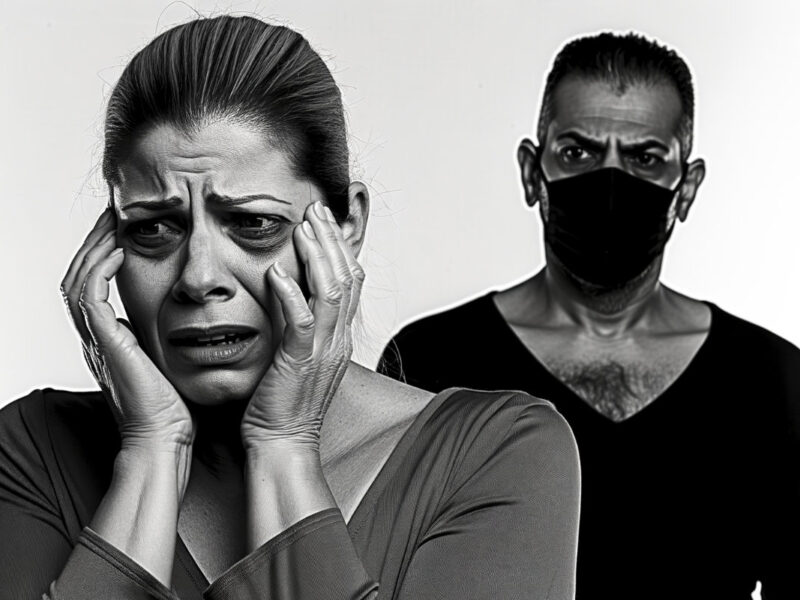Just as a murderous mystery was unfolding, leaving the public in shock, another murder trial with a peculiar history had come to an end.
In HKSAR v Chan Man Sum Ivan (HCCC 130/2021), the third trial of the accused, the jury unanimously acquitted him of murder but find him guilty of manslaughter.
The case of Chan Man Sum Ivan began in 2011 when his mistress, Ms Chun Ka Yee, went missing. When the police investigated the whereabouts of Ms Chun, they believed that she had already died. However, her body was never found. Therefore, there was no direct evidence as to her death, nor was there any forensic evidence as to how she died.
Instead, circumstantial evidence is all there is. In particular, the movement of Mr Chan and Ms Chun, as shown on the CCTV, is the most important. While there is no direct evidence, legally, this is still sufficient.
Movements as shown by CCTV
Ms Chun was last seen on 5 October 2011 at 16:15, which was captured by CCTV as she returned to her home in Amoy Gardens in Kowloon. A flat that was purchased with funds from the accused, Mr Chan. She was never seen leaving the building.
Then on 6 October at 18:52, Mr Chan went to the flat. He left about one and a half hours later at 20:34. Relying solely on circumstantial evidence, the prosecution says that Mr Chan must have killed Ms Chun after going to her home on 6 October.
That night, Mr Chan returned to the flat at 20:50. With him, he had bought a number of cleaning supplies, including heavy-duty household gloves, deodorizer, a vacuum storage bag and four rolls of 300-foot clingfilm. He left the flat again at 22:11.
The next day, on 7 October, Mr Chan drove to Amoy Gardens and went to the flat at 10:18 carrying a plastic bag. Half an hour later, at 10:44, he left the flat again with a trolley carrying a bag and drove away. At 11:37, he drove back to Tsueng Kwan O Plaza, and was home at Metro Town at 12:53. The prosecution case was that Mr Chan must have disposed of the body by removing it from the flat with the bag, then dumping the bag somehow before going home.
On 9 October, Mr Chan left his car for cleaning. And on 10 October, he went to the flat with a decorator who had cleared out the flat over two days.
Other evidence
Furthermore, the death of Ms Chun was supported by the lack of immigration records, bank records, and contact with friends and family. The building also had no fire escape door alarm records during the key period.
The First Trial
The case went to trial for the first time in 2015. Mr Chan denied killing Ms Chun, and that she must have managed to leave the building without being seen. She has perhaps disappeared or committed suicide. Mr Chan was convicted of murder unanimously.
The appeal was allowed in 2017. The Court of Appeal held that the judge at trial had failed to direct the jury as to the correct approach of inferential reasoning. Therefore, the conviction was unsafe.
The Second Trial
Following this successful appeal, the case went to retrial in 2017. Surprisingly, Mr Chan had changed his stance. He now admitted to killing Ms Chun on or about 6 October and pleaded guilty to unlawful and dangerous act manslaughter, for which he had no intention of killing Ms Chun. The jury still finds him guilty on this occasion.
Another appeal was allowed in 2021. This time the Court of Appeal held that the trial judge should have directed the jury on the possible verdict of manslaughter by provocation. It is also worth noting that the judgment recorded in detail Mr Chan’s evidence as to what happened between Ms Chun and him. Under cross-examination, prosecution witnesses, including a long-term good friend of Ms Chun, also described how Ms Chun behaved towards Mr Chan.
What had really happened?
The friend described Mr Chan as a “cultured gentleman” who treated Ms Chun well. She also recalled that on 2 October, she was at the flat and saw Mr Chan come to visit. Ms Chun told her that Mr Chan came to negotiate or have an argument, as Mr Chan had paid 1.2 million to break up with her. While Ms Chun did not want to. Upon learning this, the friend excused herself.
The friend also described her thoughts on Ms Chun. She described her temperament, as well as how she said she would make Mr Chan lose his job and appears on the news headline.
Ms Chun’s psychologist also gave evidence. He described her emotional problems and instability.
Finally, Mr Chan described what happened leading to the killing of Ms Chun.
His relationship with Miss Chan what’s discovered by his wife in March 2011. Thereafter, he tried to end the relationship, but she turned emotional. She was being consumed by alcohol, turning her irritable and often scolding him fiercely. She would break down, cry, and be suicidal.
As a promise to his wife to cut off all ties with Ms Chun, Mr Chan went to the flat on 6 October to break up with “KK”, which is how he referred to Ms Chun, urging her to go to counselling.
Mr Chan described how Ms Chun changed into a ferocious person, as he broke the bad news to her. She scolded Mr Chan and his wife, then climbed onto an open window. She went down and suddenly slapped Mr Chan. He grabbed her hands, but she kicked her in the groin. They struggled in the dining room and living room, eventually falling onto the floor.
Mr Chan then described how he put his weight onto Ms Chun to stop her. At the time, he managed to grab hold of her hands across her chest and put his arm onto hers to stop her from hitting him. She struggled vigorously, but after a while, she stopped.
At the time, Mr Chan thought that she had stopped hitting. He let go of her and locked himself in the washroom for her to calm down. Unbeknownst to him, Miss Chan was already unconscious and may have already died. It all happened very quickly, according to Mr Chan.
Out of fear of losing everything, Mr Chan hesitated but chose not to call the police. He then began cleaning up the scene and disposing of the body. He put her in a nylon bag. However, it was too difficult to remove the body by himself.
He also tried to create a smoke screen by removing the SIM cards from Ms Chun’s two phones and dumping her handbag together with her belongings.
Mr Chan finally revealed what he did with the body. The next morning, Mr Chan went back to dispose of the body. He drove the body to several places before dumping her in a rubbish trolley outside a village in Sai Kung. And the rest is history.
As to why he lied in the first trial, Mr Chan explained that he feared that it would cost him everything. Now that he did, he wanted to take responsibility for killing Ms Chun.
The Court of Appeal considered the prosecution case that this killing was not premeditated, and the above version of events was given by Mr Chan. The Court further held that there is an evidential basis to leave an alternative verdict of manslaughter by provocation with the jury, which the trial judge failed to do, again rendering the conviction unsafe.
The Third Trial
The case finally went to trial for the third time in 2023. On 27 February 2023, the jury unanimously found Mr Chan not guilty of murder but of manslaughter by provocation. He was sentenced to 9 and a half years imprisonment the next day and is expected to be released soon.
This case speaks volumes about the importance of a judge’s direction to the jury. Especially in a difficult case like this, the jury often depends upon the judge’s direction and guidance in reaching their factual finding. Any mishaps might mean miles.
Gordon Chan, Esq
Barrister-at-law, Archbold Hong Kong Editor on Public Health, and Member of the Bar Association's Committee on Criminal Law and Procedure. Specialised in medical, technology and criminal law.



